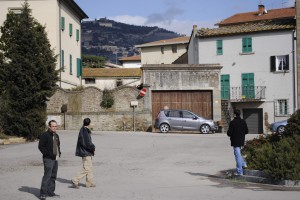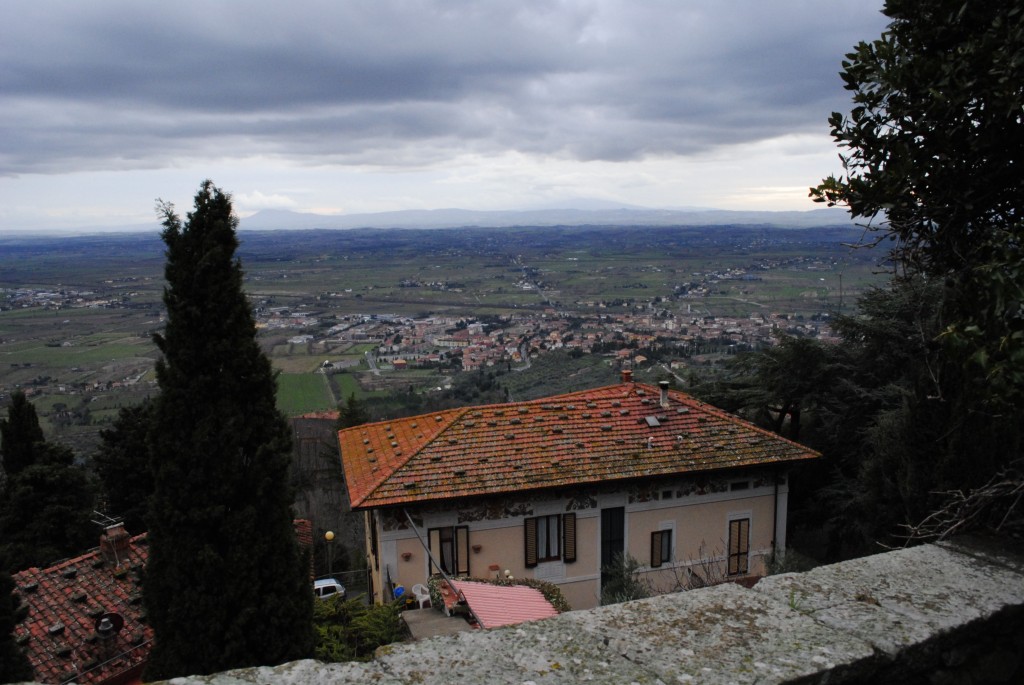Feb
22
Well, 26 University of Oklahoma students and I have successfully made it to Arezzo, Italy! Sorry for the delay in updates, but the internet can be tricky, or expensive, to access. Arezzo is located in Toscana, about 75 kilometers south of Florence, if one is taking the A1, or “Autostrada.” Just a couple weekends ago, in fact, two of my friends and I joined my landlord on a journey to Florence (Firenze as an Italian would call it) to attend a jazz concert. Approaching Florence at night as we zipped past European semi-trucks, which appear to either be completely out of control or abiding by the lower speed limit required of them—much like Illinois actually, my landlord pointed out the orange glow emanating from behind one of the countless Tuscan hills, which are a hallmark of this area of Italy. The curve of the Autostrada brought us through a tunnel and then all of a sudden we descended the off-ramp in a tight curve, paid our toll, and were on the streets of Florence within seconds. Needless to say, at that point I had no idea where I was. The place we arrived at was actually called “American Bar,” with a second more memorable name, but alas, I was a bit too distracted by the “American Bar” sign’s pink letters glowing under a massive building with an colonnaded façade. But that’s Italy, and the jazz concert was certainly a night I’ll remember for the rest of my life.
This past Sunday, however, three of my friends and I decided to take a day trip to Cortona, about 30 kilometers south of Arezzo, near the border between Toscana and Umbria. This hilltop town may sound familiar for some not so historical events that took place with the release of the movie Under the Tuscan Sun, in 2003. Frances Mayes’ blockbuster novel incorporating almost every known stereotype of the Italian countryside, especially that of Tuscany, has caused a huge increase in tourism to this town since its release. Whether it was Diane Lane’s performance, or the arrival of Sandra Oh’s pregnant belly, Cortona had definitely felt the Hollywood effect. In a cafe on the main square, Piazza della Repubblica, in fact, there was a large black and white photograph of Diane Lane and who I believed was the owner of the cafe. After contemplating how, even in this hilltop town of the steepest roads and sidewalks I’ve encountered so far here in Italy, an American actresses’ face could somehow be staring back at me with some strange familiarity solidified how I think that many Americans’ impression of what Italy is can be rented at your local video store. But I have to include myself in that group, because I remember the impression Under the Tuscan Sun had on my early perspective of what Italy is too.
After visiting the Museo dell’Accademia Etrusco, founded in 1727, which is an extremely important museum full of Etruscan, Roman, and Egyptian artifacts, and includes the library of Onofrio Baldelli (website here: http://www.cortonamaec.org/english/museum_symbols.php), we visited the Diocesan Museo, where Fra Angelico’s Annunciation, works by Pietro da Cortona, and other important works seem odd for such a small town. Yet, that’s Italy, and certainly something one should understand about this place: 60 percent of the world’s art masterpieces call Italy home. And with that much art, there’s always something to see. A family friend told me before I left for Italy, “Go into every church in Italy, every one of them is somehow worth it.”
And on that note, I’ve included two pictures. Certainly no picture could capture the view from the top of Cortona, where a Medici Fortress lies and is used by the local population as a gathering place for special events. Just another day in Italy.


Comments
One Response to “Cortona, Italia via Arezzo”
Leave a Reply



Very nice post! I will have to come visit this area.